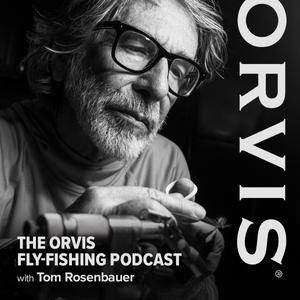
The Orvis Fly-Fishing Podcast
Tom Rosenbauer, The Orvis Company
- 1 hour 23 minutesWhat's the First Fly to Tie On? With Award-Winning Outfitter Tim WestBreckenridge Outfitters is this year's winner of the Orvis Endorsed Outfitter of the Year Award and Tim West [44:07] is the glue that holds this fabulous guide service together. In the interview, Tim talks about how to decide which fly to tie on at the beginning of the day, or when you first approach the water. Do you start with a streamer, a nymph, a wet fly, a dry fly, or some combination of them? What clues should you observe to decide which one to try? We have some fascinating questions this week in the fly box, questions I am sure many of you think about yourself, including:
- Can you explain the difference between fast, medium, and slow fly rods?
- I noticed a bright orange sludge-like material on the bottom of my stream. Should I stay away from this one?
- Do you think kayaks spook trout more than belly boats?
- After a rod, reel, and line, what piece of gear should I consider next?
- When tying to fill a fly box, should I tie one of each pattern or 4 or 5 of the same one?
- Is there a disadvantage of using a perfection loop instead of a non-slip mono loop when tying on a streamer?
- If I see a heron in a pool in a small stream, should I move on and avoid that pool?
- Would it work to have a leader with a very long butt section, a short transition section, and a very long tippet?
- Why do trout eat or reject an imitation of a midge pupa in a lake?
- Do you think a 5-weight outfit is a good rod for taking to Alaska?
- Why don't my marabou flies stay fluffy once they have been used?
- A listener tip for tying a dropper to the bend of a hook.
13 May 2024, 4:01 am - 1 hour 28 minutesSecrets of Carp Fishing Around Spawning Time, with Rowan LytleCarp are difficult any time but around spawning time they can be extremely frustrating. But they can be caught on a fly. You need to know where to look and which fish to target. Guide Rowan Lytle [44:38] has it dialed in, and if you always wanted to catch a carp on the fly you need to listen to this podcast. Rowan, not yet 30 years old, has already caught 202 different species of fish on a fly rod, and some of them will surprise you. But you'll need to listen to the podcast to find out what they are. In the Fly Box this week, we have some great questions and tips from listeners, including:
- I tip for taming your line and leader when you don't use a hook keeper
- How far do I hold my UV lamp form the fly when curing UV epoxy?
- What do I do on my local lake when the Power Bait crowd out-fishes me?
- How do I catch catfish on a fly rod?
- Do you fish different caddis pupa patterns for cased vs. uncased caddis?
- How do different holes in a river change throughout the season?
- Should I fish dry flies and nymphs in a lake different from the way I fish them in streams?
- Do weed guards on flies actually work in thick vegetation?
- If we see mayflies about size 12 hatching in our lake, should we use a size 12 nymph or one smaller?
- What is the difference between flow, thin, and thick UV resins and when should I use each one?
- My size 20 grizzly hackle keeps breaking. Do you have any tips for keeping tension and not breaking the stems?
- What are the advantages and disadvantages of buying a complete outfit vs. separate components?
- A tip from a listener on whether to use your wading staff upstream or downstream of your position.
- I want to start tying flies. What pattern would you recommend I start with?
- What are your favorite bass and bluegill flies?
6 May 2024, 4:01 am - 1 hour 25 minutesAre Fly-Fishing Traditions and History Important? with Sarah FosterMy guest this week is Sarah Foster [54:15], executive director of The American Museum of Fly Fishing, on why she thinks learning about the history and traditions surrounding fly fishing are important and add to our enjoyment. She talks about recent exhibits and acquisitions, and what is in store for the future of the museum. It's a must-see for anyone visiting southern Vermont. In the Fly Box this week, we have some especially interesting questions and tips from listeners, including:
- Why do I keep getting strikes on nymphs while stripping them upstream like a streamer?
- Is the throat of a pool a common place to find trout feeding?
- At what temperature does a brown trout start to actively feed?
- When I see a pod of rising trout, why can I only fool one fish even though the other ones continue to feed?
- How do older Orvis bamboo fly rods compare to contemporary models?
- I found eggs in holdover brown trout in the spring. Were these fish that never found a mate?
- I have trouble with rabbit's foot hair coming loose on my flies. How do I secure it better?
- If you only had one line for striped bass from shore, what line would you choose?
- How much time before the incoming or outgoing tide should I fish for striped bass?
- Can you explain exactly what a shock tippet is?
- What is your "last fly" during the evening hatch when it gets tough to see?
- Do polarized sunglasses lose their effectiveness over time?
- A listener gives a tip for an easier way to tie a surgeon's knot
- A listener gives a caution about fishing below sewage treatment plants after a major flood event
- My 70-denier thread keeps breaking. What could be the problem?
- What feathers from a chicken are useful in fly tying?
- I fish a 6-weight rod and want a different rod for smaller streams. What should I pick?
- I always use a wading staff. Is the metal tip on the staff an alarm clock for trout, and have you ever put on a rubber tip to prevent this?
29 April 2024, 4:01 am - 1 hour 34 minutesHow to Test and Keep Your Balance When Wading, with Scott DucharmeScott [41:18] is an assistant professor of motor control and learning at Long Beach University, as well as a fly fisher and podcast listener. He has a small number of quick tests you can do at home to check your balance, and then simple exercises you can do at home without any special equipment to improve your balance in a matter of weeks. Wading safely and comfortably on a river involves both balance and confidence, and what you learn here will give you help with both. You'll enjoy your time on the water more. In the Fly Box this week we have so many great tips from listeners that I may be able to retire and turn the podcast over to you. But we also have some interesting questions that I'm happy to answer as best I can. Some of these include:
- A listener suggests when a self-inflating PFD may be a good option
- Two listeners weigh in on how to access scientific articles on fisheries science with paying a fee for access
- A listener offers a great suggestion on how to easily attach a dropper to the bend of a hook.
- Should I be concerned about fishing below a sewage treatment outlet?
- A listener tells a great tale of his momentous catch on one of the new Helios rods
- Should I be concerned about angling for fish when they are on their spawning run?
- With the new Helios rods, do you still prefer the F version for trout and the D version for salt water?
- If I dispose of the shiners I catch will it help the local trout population?
- What do you think of using an indicator with a big nymph or crayfish fly for early season smallmouth?
- Can you explain the difference between a shooting head and a sink-tip line?
- A listener gives some expert advice on the choice of insect repellents
- I am having trouble with short roll casts. Do you think it's my casting technique?
- Is it helpful to pre-treat dry flies right after you tie them?
- If I fish an indicator and split shot and a nymph, should I use a double taper or weight-forward line?
22 April 2024, 4:01 am - 1 hour 13 minutesThis Podcast May Save Your Life, with Ralph Cutter
Ralph Cutter [36:53] is an extremely perceptive, pragmatic angler with a lifetime of experience in white water, both fishing and in watercraft and water rescues. He feels that what we’ve been taught to do if we fall in wearing waders is all wrong, and he has a number of tips for getting to shore safely that most of us don’t know about. He also recommends a second wader belt for wading in very tricky waters. He’s proven this through countless experiments on the water. If you spend any time at all wading in rivers, you must listen to this podcast—or you can read an article in Fly Fisherman magazine he wrote a number of years ago through this link: How to Wade Safely and Get Out of Dangerous Situations - Fly Fisherman
In the Fly Box this week, we have questions that range from the very basic to more advanced, and tips from listeners as well, including:
- Why do my CDC dry flies sink like a rock?
- I am not feeling strikes when I am nymph fishing. Are there improvements I can make to feel more fish?
- Would a longer rod help more in nymph fishing?
- Why aren’t knotless leaders marked with a small segment of color so that the butt, tippet, and transition sections are clearly demarcated?
- A listener clarifies the issue of whether northern strain brook trout were ever stocked in the southern Appalachians
- If I want to fish pools that are 8-10 feet deep with a Euro rig, do I need an 8-10-foot tippet?
- What do I do if I am fishing a dropper rig and my upper dropper tippet breaks off or gets too short? Do I need to tie another surgeon’s knot?
- If I am fishing straight upstream, do I need to mend my line?
- If my hook bends after removing it from a snag and I bend it back into place, will that weaken the hook?
- I have trouble tying a dropper onto the bend of a hook. I lose tension and pressure before cinching the knot down. Do you have any tips to help this?
- The water temperature was in the 40s and there was a mayfly hatch, but I only caught fish on nymphs and nothing was rising. Why did this happen?
- Does choosing a fly rod really depend mostly on the size flies you’re throwing? When I fish a small bass fly, I don’t want to try to land a bass on my 3-weight.
15 April 2024, 4:01 am - 1 hour 34 minutesHow to Preserve Native Trout Species, with Ted Williams
The use of the natural toxin rotenone to remove invasive, non-native species of trout to protect native species is a controversial topic. Does it really work? What does the poison do to the insect, mammal, and bird populations? Ted Williams [52:36], a proponent of these tactics in selected waters, discusses where reclaiming populations has been successful and also places where it would not make sense. Ted is one of the foremost environmental writers of our time and is never afraid to stick his neck out, so you may agree with what he says or you may not, but you’ll learn some important biology in the process.
In the Fly Box this week, we have a host of interesting questions and some great tips from listeners, including:
- A plug for Trout Unlimited’s “Trout in the Classroom” projects
- What is your favorite rod for small streams, what size flies do you use, and where do I find the biggest trout in small streams?
- Can I use nymphs in small streams? They have not worked for me.
- How do you test water temperature? Do you need to suspend the thermometer deep in the water?
- How can I catch walleye on my fly rod?
- At what water temperature should I fish for bass?
- How long do you stick with one fly before changing it, and what do you look for in new water?
- Have you found any difference between painted and unpainted flies on streamers?
- I want to do some writing about fly fishing. How do you handle criticism when you do this?
- What is the best practice for tipping guides?
- Do you recommend studs for rubber-soled waders, and how often can you remove them and then put them back?
- On cloudy days I can’t see as much with my polarized glasses? What should I do?
- How long does it take for trout to get back into their normal positions after a flood?
- Should you present streamers differently in the early season than you would later in the spring?
- The dry fly on my dry/dropper rig keeps twisting. What can I do to avoid this?
- How do you get your fly to fish in deep water running along the bottom?
- I keep breaking my tippet where it connects to my tippet ring even though I am using a lighter tippet to my flies. What can I do?
8 April 2024, 4:01 am - 1 hour 23 minutesTips for Early Season Trout-Fishing Success, with BJ Gerhart
This week, my guest is guide BJ Gerhart [33:50], a longtime veteran guide at Three Rivers Ranch in Idaho and one of the savviest anglers I know. He shares his tips for getting around the common problems of early season trout fishing, mainly cold water and high flows.
In the Fly Box this week, we have some helpful tips from listeners, and some interesting questions for Tom, including:
- If adult trout can’t see UV light, as you said in last week’s podcast, what should I do with all the UV and flashy materials I have in my fly-tying collection?
- What kind of standard trout flies are closest to the kebari flies used in tenkara fishing?
- When fishing a dry dropper, all the trout took my dry fly yet when I removed the nymph I stopped getting strikes. What caused this?
- Why are beads on nymphs usually gold?
- Why is my casting worse when I use beadhead flies?
- What are the main differences between the 9-foot and the 8-foot, 5-inch Helios rods for a 10-weight line?
- Why is fly fishing for salmon in Great Lakes streams not as popular as steelhead fishing?
- When choosing a fly line for a two-handed rod, should I add the grain weight of the sinking head to the grain weight of the Skagit head?
- A great tip for wading safety with a buddy
- A listener raves about the Orvis rod repair team
- Do you think I should stop trout fishing at 60 degrees just to be safe?
- Are there public resources I can use to find out if a river might be too high to fish?
- A listener gives a tip for adding a long mono rig easily without the need to tie a clinch knot to the permanent loop in a fly line.
1 April 2024, 4:01 am - 1 hour 21 minutesHow Trout See, with Jason RandallCan trout see color? Can they see UV light? How does a trout's window on the outside world affect how they feed and how they notice predators like us? How can a trout see so well at night and also in bright light when they have no eyelids, and their pupils don't constrict? Jason Randall [31:10] is an experienced fly fisher and scientist, and he stays up on the latest scientific papers on trout and also talks to leading scientists, and is one of the best at distilling this information for us ordinary anglers. This is a fascinating podcast and Jason does a great job of explaining trout vision. In the Fly Box this week, we have some great questions but also a bunch of great tips from listeners, including:
- When water is low and the sun is bright, what tactics do you recommend for Great Lakes steelhead?
- Four great fly-tying tips from a tier in the UK
- I am looking at the 10-foot Helios rods. For all-around fishing, should I get the 3-weight F model or the 4-weight D model?
- A guide from the mid-Atlantic shares tips on targeting snakeheads
- A young fly tier asks for advice on a moderately priced vise for tying bass flies
- Why do my 9-foot 6X knotless leaders keep breaking?
- A new fly fisher from Ohio recounts a wonderful experience he had on the river
- A listener provides some great tips on rooftop rod carriers
- A listener asks for suggestions for a book on the history of trout in North America
25 March 2024, 4:01 am - 1 hour 33 minutesAll About the Henry’s Fork, with Brandon Hoffner
My guest this week is Brandon Hoffner [35:55], executive director of the Henry’s Fork Foundation, and the topic is the diverse habitat and trout-fishing opportunities of this world-famous river that has influenced so many anglers, techniques, and fly patterns over the years. Like all trout rivers today, the Henry’s Fork also has its share of environmental issues and we’ll explore how the Henry’s Fork Foundation works to maintain this magical fishery.
In the Fly Box this week, we have a roundup of questions and tips from listeners, including:
- What is the advantage of a 9 ½-foot rod over a 9-footer or 10-footer?
- A great tip from a listener on how to remove salt water from flies you have fished
- When would you use a Tenkara rod over a traditional Western rod? And do you have a favorite Tenkara rod?
- Does Tom Rosenbauer actually tie the flies in the Orvis Tom Rosenbauer fly selection?
- What is the history of the famous Orvis Far & Fine graphite rod, and what line would you put on it?
- For small creeks, is it better to use a 2-weight or a 3-weight line?
- What can I substitute for goose biots on the tail of a stonefly nymph?
- Can you explain the pros and cons of polyleaders vs. sink-tip fly lines?
- What are the best fly lines on the new Helios 7 ½-foot 3-weight rod and the new 8-foot, 5-inch 7-weight rod?
- A listener talks about how he uses the new Orvis wading staff as a hiking staff as well.
- Will the heat inside a car in summer hurt my Orvis raincoat?
- A call from Captains for Clean Water with some great news from the Everglades
18 March 2024, 4:01 am - 1 hour 6 minutesDisturbing News on Montana's Smith River, with David Brooks
The Montana Supreme Court recently reversed a decision that would have blocked a copper mine on the headwaters of the Smith River. Where we thought we had a win in preventing a mine in the wrong place, we now may have to live with that mine. David Brooks [33:02] on Montana TU tells us how, at the very least, TU and other organizations convinced the mine to put in a number of mitigation solutions that were not in their original plan. Trout Unlimited has one more hail Mary on this issue, which you can learn about in the podcast. This is a tough subject to listen to, but we learn that we can never give up on environmental issues, even when it looks like we've won.
(To sign a petition in support of Trout Unlimited's position preventing the mine from expanding onto public land, click here https://montanatu.org/protect-the-smith-sign-the-mineral-withdrawal-petition/
In the Fly Box this week, we have some more fun and positive topics, including:- What is a tailing loop in fly casting?
- To practice casting for a saltwater trip, should I just use yarn or should I use a hookless fly similar to the size I will be casting?
- What is the purpose of a wing on a wet fly?
- Does the loop at the end of a fly line cause energy loss?
- How can I photograph striped bass beneath a bridge?
- Can I keep fly rods in my cartop quiver in hot weather?
- A great tip from a listener about using white poster board on the surface of an old rolltop desk.
- Another tip from a listener on using inexpensive drill gauges to size hunks of deer hair and beads.
- Would a one-piece rod be better than a four-piece rod?
- How do I keep debris from drifting downstream when fishing the top of a riffle?
- What is a good all-around fly line for bonefish and redfish?
- I had a fishless day and then a guy with a spin rod caught a trout right in front of me. Should I have switched to a streamer earlier?
11 March 2024, 5:01 am - 1 hour 47 minutesA New Way of Fishing a Dry Dropper, with Josh MillerJosh Miller [43:10] is a guide and has been a competitive angler and coach for years and he, like many young fly fishers, is an innovative angler who doesn't rely only on older methods of fly fishing but develops his own techniques based on how he wants his flies to drift. This is a geeky one with some rambling, but I think Josh has some thought-provoking ideas that will get many of us thinking. In the Fly Box we have some interesting questions and tips from listeners, including:
- What model of an older Orvis rod do you still fish?
- Do you have any tips from casting a Spey rod from the beach?
- The head on a fly I tied unraveled. Was it because I used Superglue and half hitches?
- A tip from a listener on a product that will sharpen fly-tying scissors.
- What conditions are best for fishing a bamboo rod?
- Can I underline a fiberglass rod?
- Can I cut the taper off an old WF5F line to make a lighter line for small streams?
- How can I get my fly-tying thread to jump backward so I can tie in tricky materials?
- What kind of setup do I need for catching snakeheads on a fly rod?
- Why do smaller streams produce smaller trout and bigger rivers bigger fish?
- What kind of PFD should I get for wearing under a fishing vest?
- Why can't I find good brown and grizzly dry-fly hackle in size 12?
- What do I need to do to switch between conventional nymphing and Euro nymphing?
- Do most communities have fly-fishing clubs and how do I find them?
- If I am going from a small stream to a lake, should I lengthen my butt section or lengthen my tippet?
4 March 2024, 5:01 am - More Episodes? Get the App
Your feedback is valuable to us. Should you encounter any bugs, glitches, lack of functionality or other problems, please email us on [email protected] or join Moon.FM Telegram Group where you can talk directly to the dev team who are happy to answer any queries.
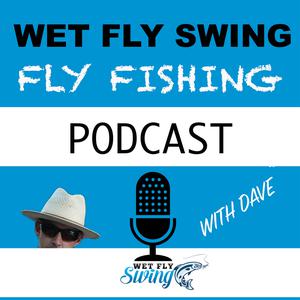 Wet Fly Swing Fly Fishing Podcast
Wet Fly Swing Fly Fishing Podcast
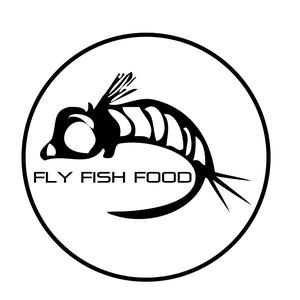 Fly Fish Food Shop Talk Podcast
Fly Fish Food Shop Talk Podcast
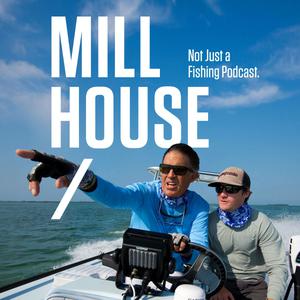 Mill House Podcast
Mill House Podcast
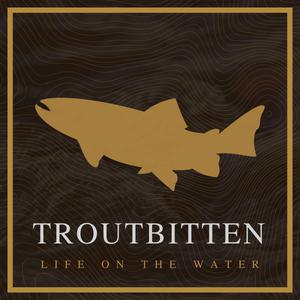 Troutbitten
Troutbitten
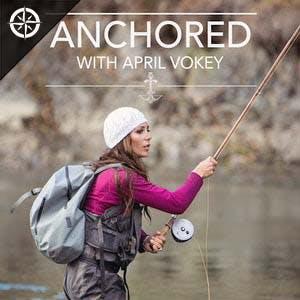 Anchored with April Vokey
Anchored with April Vokey